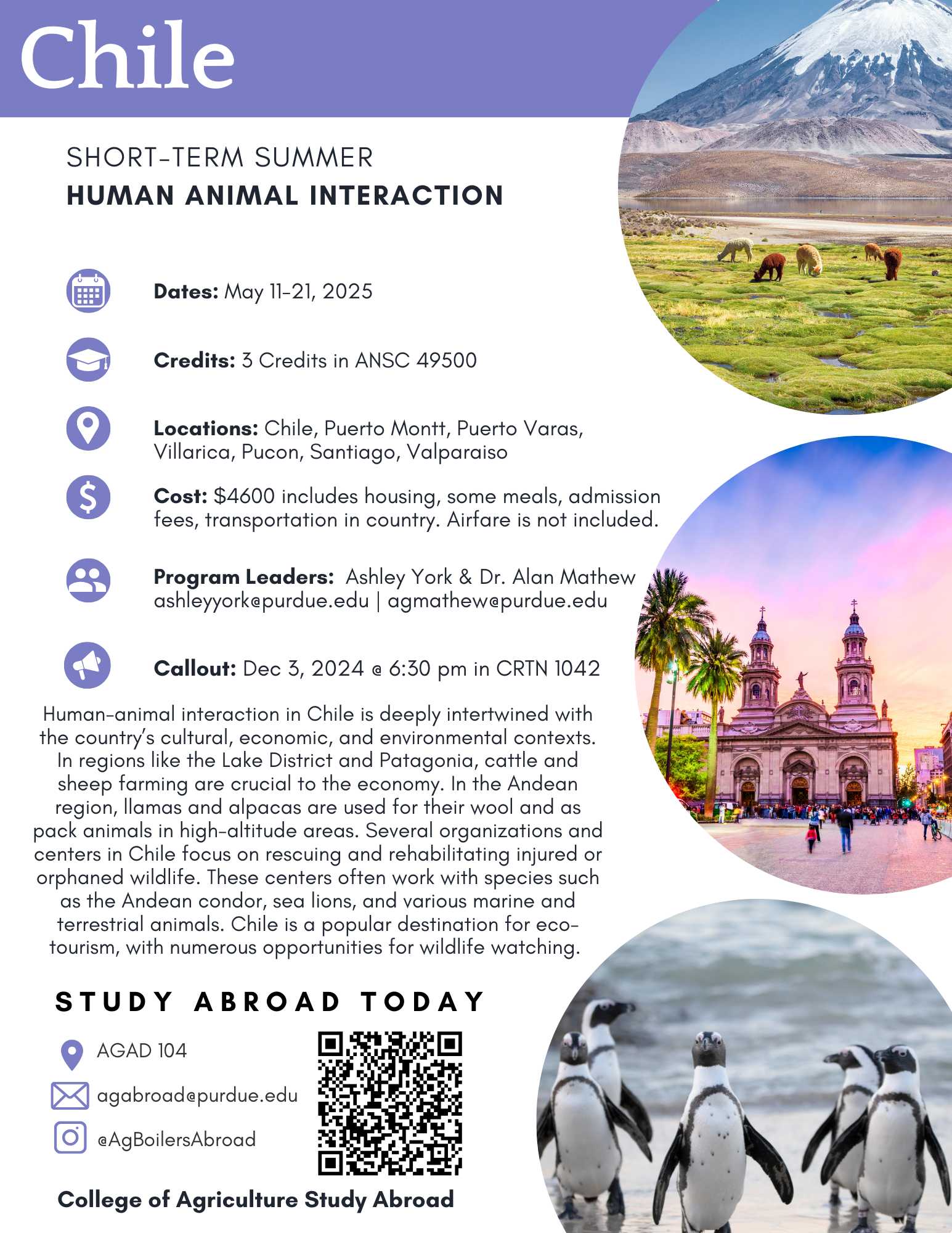Human Animal Interaction
- May 11-21, 2025
- Credits: ANSC 49500 - 3 credits
- Cost for 2025: $4600 includes housing, some meals, admission fees, medical insurance, 3 credits, transportation in country. Airfare is not included.
- Leaders: Ashley York & Alan Mathew
- Callout: December 3, 2024 @ 6:30 pm in CRTN 1042
In Chile, human-animal interactions are diverse and reflect the country's rich cultural and ecological tapestry. In rural areas, especially in Patagonia, cattle and sheep farming is prevalent. On Chiloé Island, located off the coast of southern Chile, you can find a special penguin species: the Humboldt penguin. Chiloé is known for its rich biodiversity, and the island's coastal areas provide a suitable habitat for these penguins. Alpacas and llamas are native to the Andean regions and are found in northern Chile, particularly in the high-altitude areas of the Andes. Alpacas are mainly bred for their wool, which is used to make high-quality textiles. Llamas have been used as pack animals and for their wool. Chile is home to several endangered species. The country has numerous protected areas, such as the Valdivian National Park, which help preserve Chile’s unique biodiversity. Chile has several zoos and aquariums, such as the Buin Zoo, which aim to educate the public about wildlife and conservation issues. Human-animal interactions in Chile are shaped by a combination of traditional practices, economic activities, conservation efforts, and urban dynamics. The country’s diverse environments and cultures contribute to a rich and varied relationship between people and animals.

